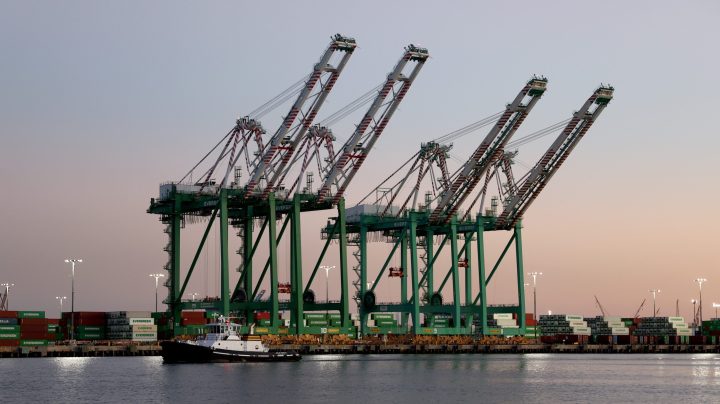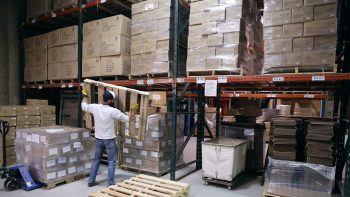
Congested supply chains may finally be easing as inventories fall
Congested supply chains may finally be easing as inventories fall

“Congested supply chains” has been a real refrain of the pandemic economy. Right after Covid hit, consumers bought a whole lot of stuff, and retailers scrambled to import as much as they could to meet that demand.
Then consumers started spending more on services and less on goods. That left retailers with a lot of excess inventory — as we’ve reported several times on this program.
But this week, we learned that inventories have finally come back down to pre-pandemic levels, according to the Logistics Managers’ Index, which is a sign that supply chains are returning to normal.
In the last few months, retailers have been using several strategies to try to get rid of all that extra inventory, said Zac Rogers at Colorado State University, who puts together the Logistics Managers’ Index.
“There’s been large write-downs, there’s been a lot of goods shifted into secondary market retailers, like dollar stores, or TJ Maxx, and places like that,” he said. “And also, there’s been a slowdown in orders.”
And that slowdown in orders has had a knock-on effect on supply chains more broadly.
Look at what’s happened to the price of shipping containers, said Rogers, as demand for them has fallen.
“The cost of a 40-foot container, going from east Asia to the west coast of the United States, is about $1,400 right now,” he said. “A year ago that was close to $20,000.”
It’s also not taking as much time to import products.
Pat Whelan handles imports at Sahadi’s, a grocery store and wholesaler in Brooklyn.
“You know, you’re not over-ordering, ordering early, anticipating that something that would take 30-60 days to get will take 90-120 days to get,” he said. “You’re not thinking like that anymore.”
Whelan said that feels great.
“It’s been a long couple of years to have that other added pressure about dealing with supply,” he said. “Now, I feel like that’s not much of an issue anymore.”
But, Whelan isn’t getting too excited and loading up on inventory.
“While it’s a cheaper freight rate, it’ll be offset by the carrying costs of having the inventory, paying for the inventory, storing the inventory, if the sales are not there to move the inventory through,” he said.
And the sales might not be there, if the economy slows down next year.
Pat Whelan isn’t the only retailer being cautious right now, said Lisa Ellram, a professor of supply chain management at Miami University in Ohio.
“We do have this looming threat of a recession,” she said. “And they’ve just sort of come through this, and they’re kind of going ‘Whoo, wow, we survived that one somehow.'”
Retailers are likely to be a lot more judicious next year about what they stock up on, Ellram said.
That way, they’re not left holding the bag if the economy goes south.
There’s a lot happening in the world. Through it all, Marketplace is here for you.
You rely on Marketplace to break down the world’s events and tell you how it affects you in a fact-based, approachable way. We rely on your financial support to keep making that possible.
Your donation today powers the independent journalism that you rely on. For just $5/month, you can help sustain Marketplace so we can keep reporting on the things that matter to you.

















